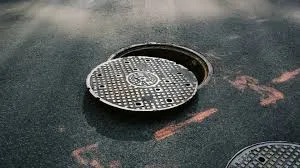Saddle Clamp Designed Specifically for Carbon Rails on Bicycles and Accessories
Understanding Saddle Clamps for Carbon Rails
As cycling technology continues to advance, carbon fiber has emerged as a popular choice for various bike components, including saddle rails. Carbon rails, celebrated for their lightweight and stiff properties, offer cyclists enhanced performance. However, they also require specialized components for secure installation, particularly saddle clamps. In this article, we will explore the essential features and considerations regarding saddle clamps designed specifically for carbon rails.
The Importance of Proper Saddle Clamping
Saddle clamps are crucial in securing the bicycle saddle to the seat post. When it comes to carbon rails, the stakes are even higher. Carbon fiber is less tolerant of over-tightening than traditional metal rails. A poorly designed or improperly adjusted clamp can lead to damage, which may compromise the integrity and lifespan of the saddle. Therefore, selecting the right saddle clamp is paramount for preserving the quality of carbon components.
Key Features of Saddle Clamps for Carbon Rails
1. Material Composition The best saddle clamps for carbon rails are typically made from lightweight yet durable materials such as aluminum or titanium. These materials ensure strength while maintaining the overall lightness of the bike setup.
2. Design and Mechanism Many of the top clamps employ a two-bolt design to distribute pressure evenly across the saddle rail. This prevents the deformation of carbon material and allows for adjustable positioning. It's essential to look for clamps that offer easy installation and adjustment without complicated mechanisms.
saddle clamp for carbon rails

3. Weight Distribution One of the standout benefits of some more advanced saddle clamps is their ability to provide optimal weight distribution. Well-designed clamps can significantly improve the comfort and performance of the ride by aligning the saddle to the cyclist's preferences while maintaining stability.
4. Compatibility When looking for a saddle clamp, it is crucial to ensure it is compatible with the specific carbon rail dimensions. Most carbon rails conform to industry standards, but variations exist. Always check the specifications before making a purchase to avoid compatibility issues.
Installation and Maintenance Tips
Proper installation and periodic maintenance of the saddle clamp can significantly extend the life of both the clamp and the saddle itself. When installing, it is advisable to use a torque wrench to avoid over-tightening. Most manufacturers provide specific torque specifications; adhering to these guidelines ensures that the carbon rails remain undamaged.
Besides, regular inspections should be made to ensure that the clamp is not loosening over time. This is particularly important for cyclists who ride frequently, as the vibrations and impacts of the road can affect the stability of the clamp.
Conclusion
Saddle clamps tailored for carbon rails play a pivotal role in modern cycling setups. By understanding their critical features and maintenance needs, cyclists can make informed choices that enhance their riding experience. Investing in a high-quality saddle clamp not only protects your equipment but also ensures comfort and efficiency on every ride. Whether you are a casual rider or a competitive cyclist, this relatively small component deserves careful consideration.
-
The Smarter Choice for Pedestrian AreasNewsJun.30,2025
-
The Gold Standard in Round Drain CoversNewsJun.30,2025
-
The Gold Standard in Manhole Cover SystemsNewsJun.30,2025
-
Superior Drainage Solutions with Premium Gully GratesNewsJun.30,2025
-
Superior Drainage Solutions for Global InfrastructureNewsJun.30,2025
-
Square Manhole Solutions for Modern InfrastructureNewsJun.30,2025
-
Premium Manhole Covers for Modern InfrastructureNewsJun.30,2025
